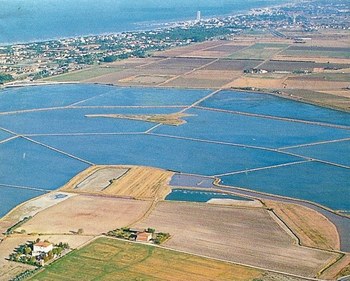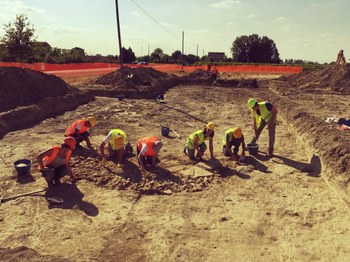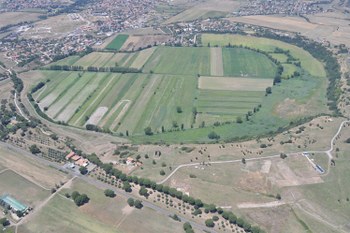Case Studies

The Cervia Project and the Cervia Vecchia excavation (Cervia, RA, Italy)
In 2019 the University of Bologna started the Cervia Project, under the direction of Prof. Andrea Augenti and the coordination of Dr Mila Bondi and Dr Marco Cavalazzi. The aim is to investigate the territory of Cervia, a medieval city on the coastland south of Ravenna. The research started first with an artefacts survey, which was followed from the 2020 by an excavation at Cervia Vecchia, the site where the city was located until the end of 17th c. CE, when the settlement was moved eastwards, outside the salt lake of the "Salina" of Cervia and nearer the shoreline.
Currently the project includes several levels of research, in addition to the excavation and the artifact survey, such as extensive geophysics, remote sensing, geoarchaeological and archaeobotanical studies.
The BiGAr project will test the outcomes of the research (database and 4d digital representations) on the new and old data collected from this site.

The Bassa Romandiola project and the Zagonara Castle excavation (Lugo, RA, Italy)
The Bassa Romandiola project was started in 2009 by the University of Bologna, under the direction of Prof. Andrea Augenti and the coordination of Dr Marco Cavalazzi. The aim of investigating the north-eastern area of the Ravenna hinterland, the so-called Bassa Romagna.
The research included an artifact survey (from 2009), the extensive excavation of the Castle of Zagonara (from 2017) - a medieval fortified village abandoned from the 15th c. CE, and geoarchaeological research. The research allowed to document more than 70 archaeological sites, most of them previously unknown.
The aim of the BiGAr project in this case is to apply its framework and outcomes to this case study, in order to manage the variety of dataset coming from this research.

The Gabii project, Rome (Italy)
The Gabii Project is an international archaeological initiative under the direction of Nicola Terrenato of the University of Michigan. It was launched in 2007 with the objective of studying and excavating the ancient Latin city of Gabii, a city-state that was both a neighbor of, and a rival to, Rome in the first millennium BC. Located in the region of Italy once known as Latium, the site of Gabii was occupied since at least the tenth century BC until its decline in the second and third centuries AD.
In the field of the BiGAr project, dr Marco Cavalazzi will have training in one of the most advanced workflow for documenting the 3D nature of the archaeological record. Furthermore, we will apply the results of the project to the Gabii dataset too, offering the possibility of improving it.